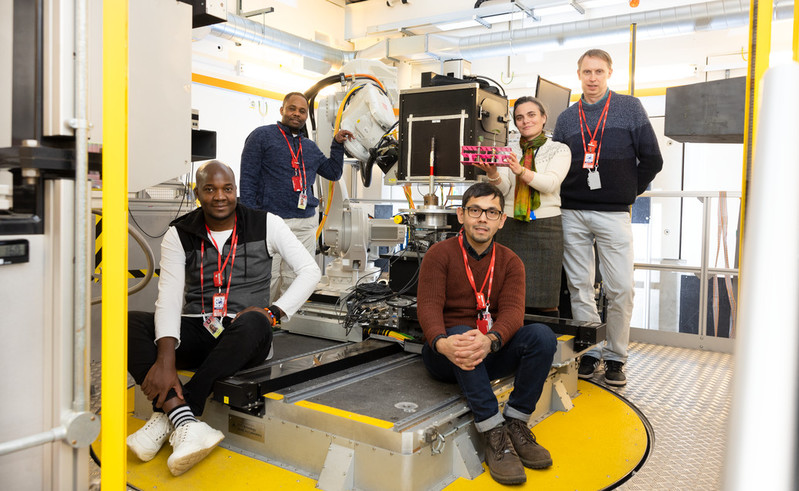 Food security in climate change.
Food security in climate change.
Long droughts between rainy seasons create incredibly harsh conditions for crops to survive. Yet that is what some farmers in Africa are now facing thanks to climate change.
Researchers from Durham, Southampton and Strathclyde Universities are looking for a way to battle these conditions and maintain food security in these regions with the help of both ISIS and Diamond. Previous research has shown that soil microbes could be the key to controlling a crop's response to drought. Knowing this, the team used complementary imaging methods available at ISIS and Diamond to image the effect of different levels of soil microbes on root growth during drought conditions. While neutron tomography setup on IMAT at ISIS helped them to image the organic content, including root and water distribution, X-ray tomography at Diamond allowed them to scan the roots and the soil near the roots with high spatial resolution. Together this can help them to find the best balance of soil microbes to allow the crops to survive through drought. If this balance is found, they hope to use the research to create a microbial technology that farmers could use to make their soil more resilient to the conditions!
(Photo features: Peter Mavindidze, Steve Chivasa, Fernando Alvarez-Borges, Genoveva Burca and John Hamilton )

Protecting Historical Artifacts
From harmfully dry conditions to deteriorating damp conditions… If an old canvas or parchment material is exposed to humid conditions, it drastically speeds up the rate of deterioration. Using methods inspired by nature these researchers from Birkbeck, UCL and Toronto University, hope to use materials already found in the material itself to strengthen its resilience to outside influences. Using IMAT the team were able to induce 100 years of aging in just a matter of hours through subjecting the samples to increasing levels of humidity. This allowed them to test the protective levels of their conservational technique. Their samples included fragments from a Turner (19th century) and a Landseer (17th century) painting!
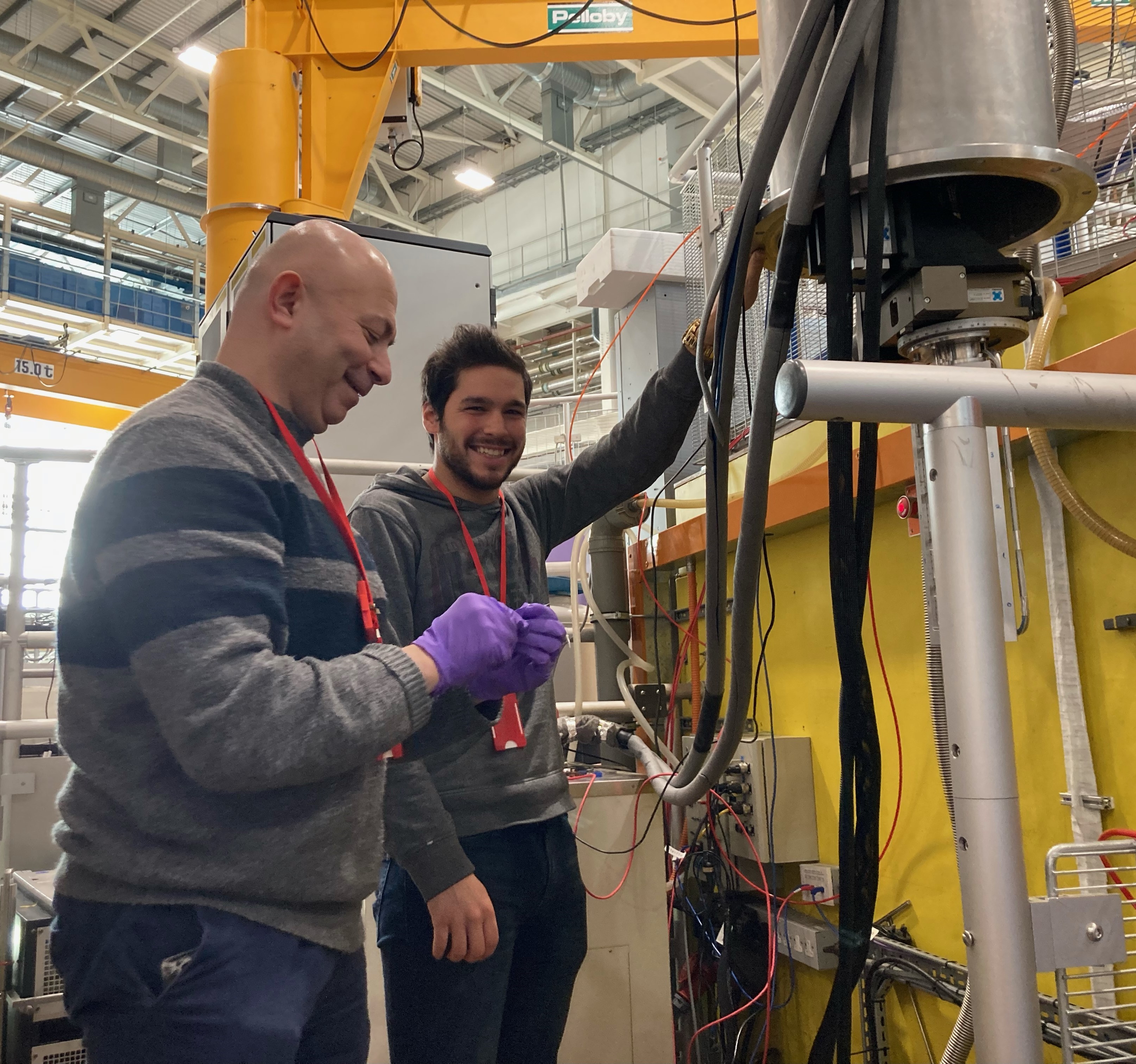
Water in Space
In a more out-of-this-world study, researchers from Leeds University used our NIMROD instrument to investigate the environment of Saturn's largest moon, Titan. The nitrogen-rich atmosphere, and movement of Titan's crust as it orbits Saturn, leads researchers to believe that Titan has an ocean beneath its surface, enriched in ammonia. As well as this, Photochemistry in Titan's thick atmosphere generates an organic-rich tholin dust. These researchers were studying the implications for biochemistry when tholins interact with an ammonia-rich ice-water melt. With their own ammonia mix made to mimic Titan's they used our beamline to analyse water structure at low temperatures, in conditions associated with an impact event, or cryovolcanic eruption on Titan's surface.
The simple molecules produced on titan are surprisingly close to the combination of molecules we think were present for the very beginnings of life on this planet. Maybe one day this research could help us understand the early stages of life on earth.
(Photo features: Harrison Laurent and Mazin Nasralla)
The secrets of Spaghetti
Spaghetti on SANS 2D? Researchers from the ESS and RWTH Aachen University came to ISIS to study the nanostructure of pasta. Specifically, they were looking at the different structures created by gluten-free spaghetti, in comparison to gluten-containing spaghetti. It seems that gluten free pasta alternatives overcome the issue of gluten, via methods that leave the pasta with a strange chewy texture for a generally less appealing experience in comparison to gluten-containing options. The experiment involved comparing spaghetti cooked in different conditions, slicing it thinly and exposing it to the neutron beam. Hopefully, the results from this and any future experiments will shed some light on the changes that occur on the nanoscale inside gluten-free spaghetti, so that improvements can be made to gluten-free substitutes. Read our highlight on this research here!
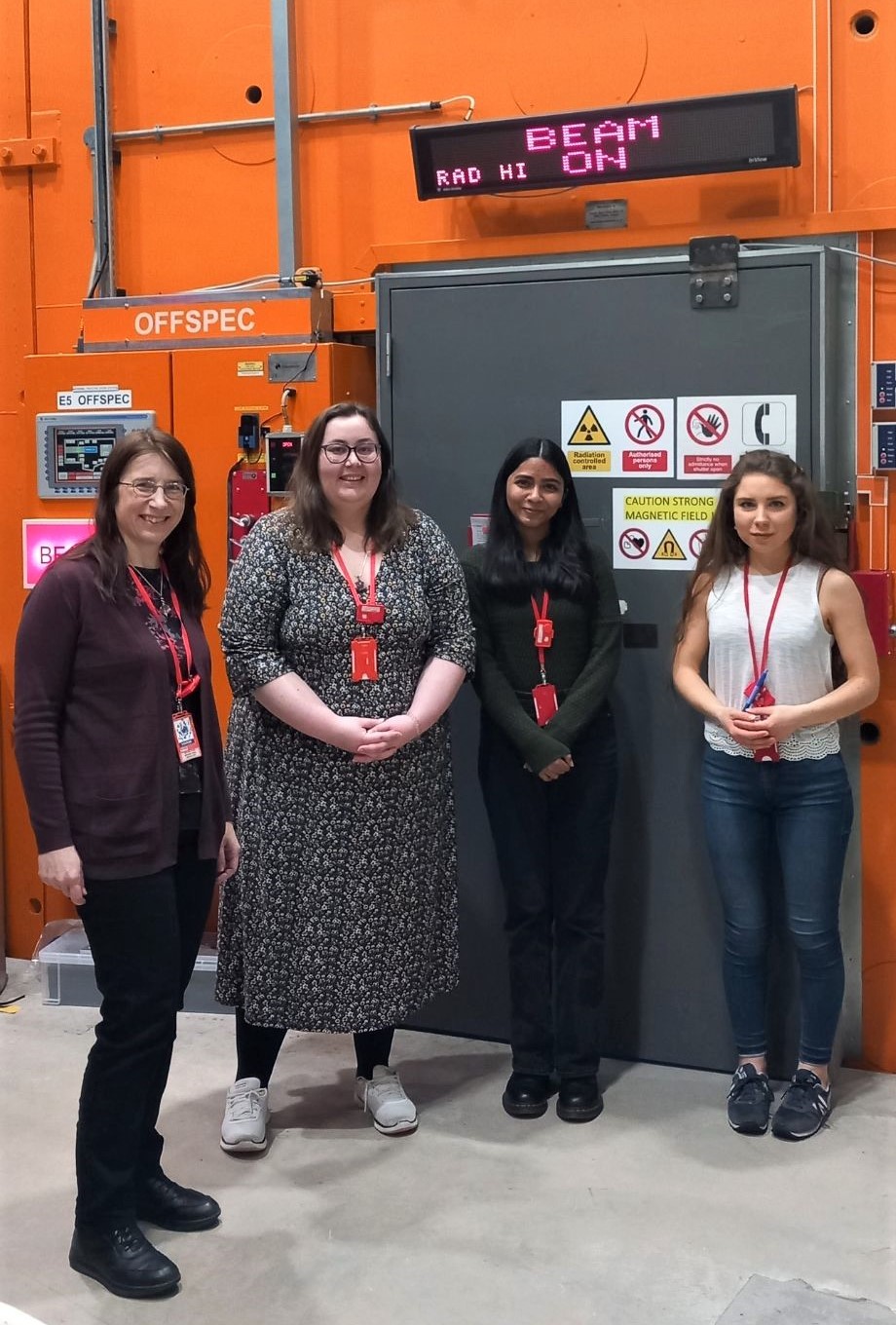
Bacterial survival in stressful situationsOxford researchers have been busy on our Offspec beamline studying the survival of bacteria in stressful situations. Some species of plants have a bacterial defence mechanism of filling themselves with metals such as zinc. These rare plants were used in this study to investigate how bacteria can survive such harsh conditions to infect the plant regardless. In laboratory conditions, scientists use magnesium chloride to transfer bacteria to a plant. It is thought that this protects the bacterial membrane from the sudden change in conditions; from a test tube to the high concentration of zinc inside the plant. Using the neutron beamline, the team were able to test the effects of different rich metal environments on bacterial infection rate. This could help them uncover the importance of magnesium in this process. In the future this research could play a part in preventing/treating crop disease.
(Photo features: Professor Gail Preston, Rose Bourdon, Athira Menon and Corin Blake.)
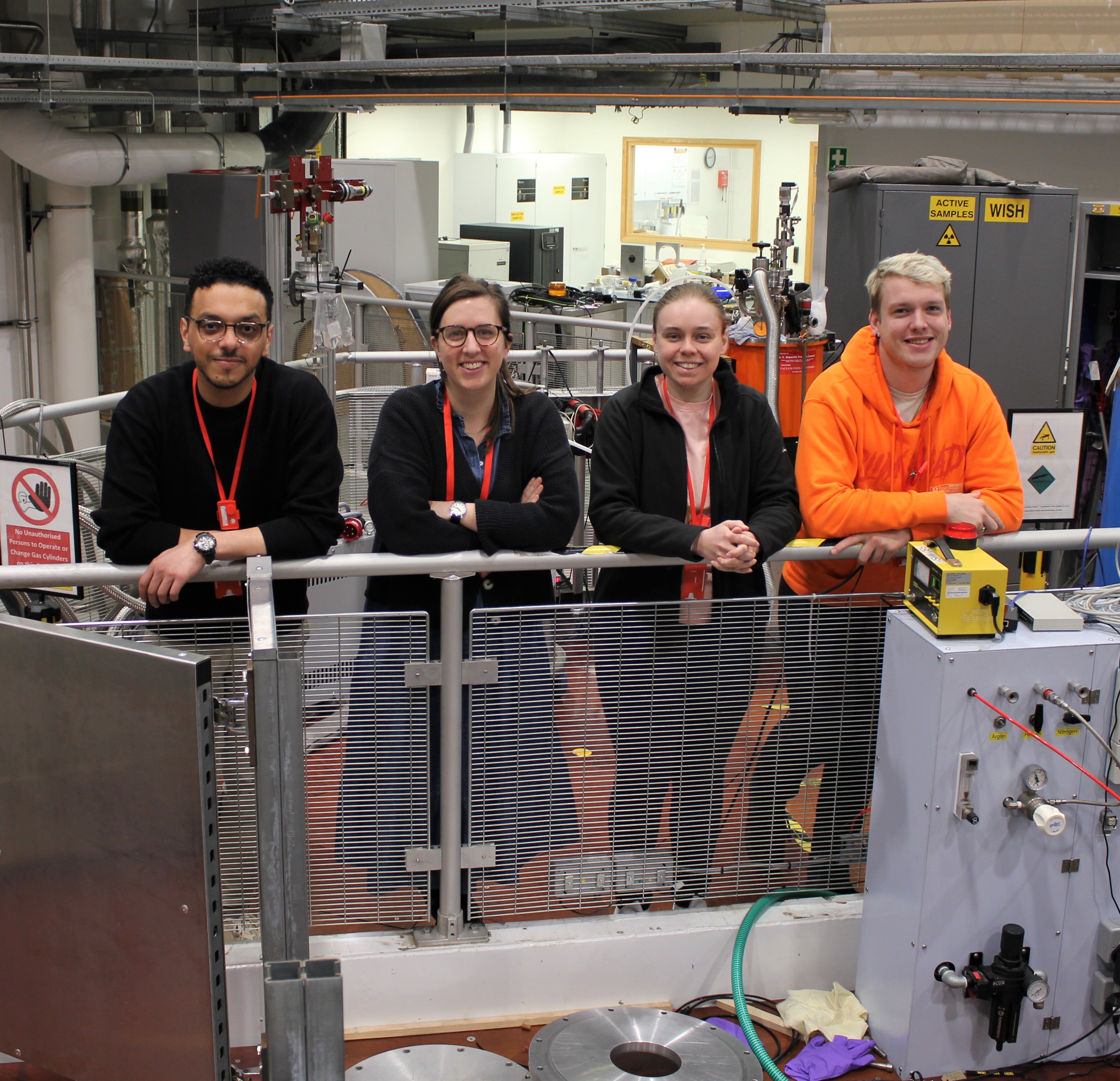
Investigating Magnetism
This cycle on WISH, researchers from the University of Birmingham were investigating a Metal-organic framework to shed light on its quantum magnetic behaviour. This material specifically, is made up of magnetic copper ions surrounded by an organic framework of carbon. Its structure makes it a magnetic analogue of graphene, with weak bonds between the layers allowing for low-dimensional magnetic properties. Due to the properties of layering and magnetism, this study could produce some interesting results to help find out the answer to a highly disputed topic – the existence of two-dimensional magnetism. The material was tested at just 50 milli-Kelvin on our WISH beamline to uncover its magnetic ground state.
(Photo features the team: Aly Abdeldaim, Lucy Clark, Amie Troath and Tristan Dolling)
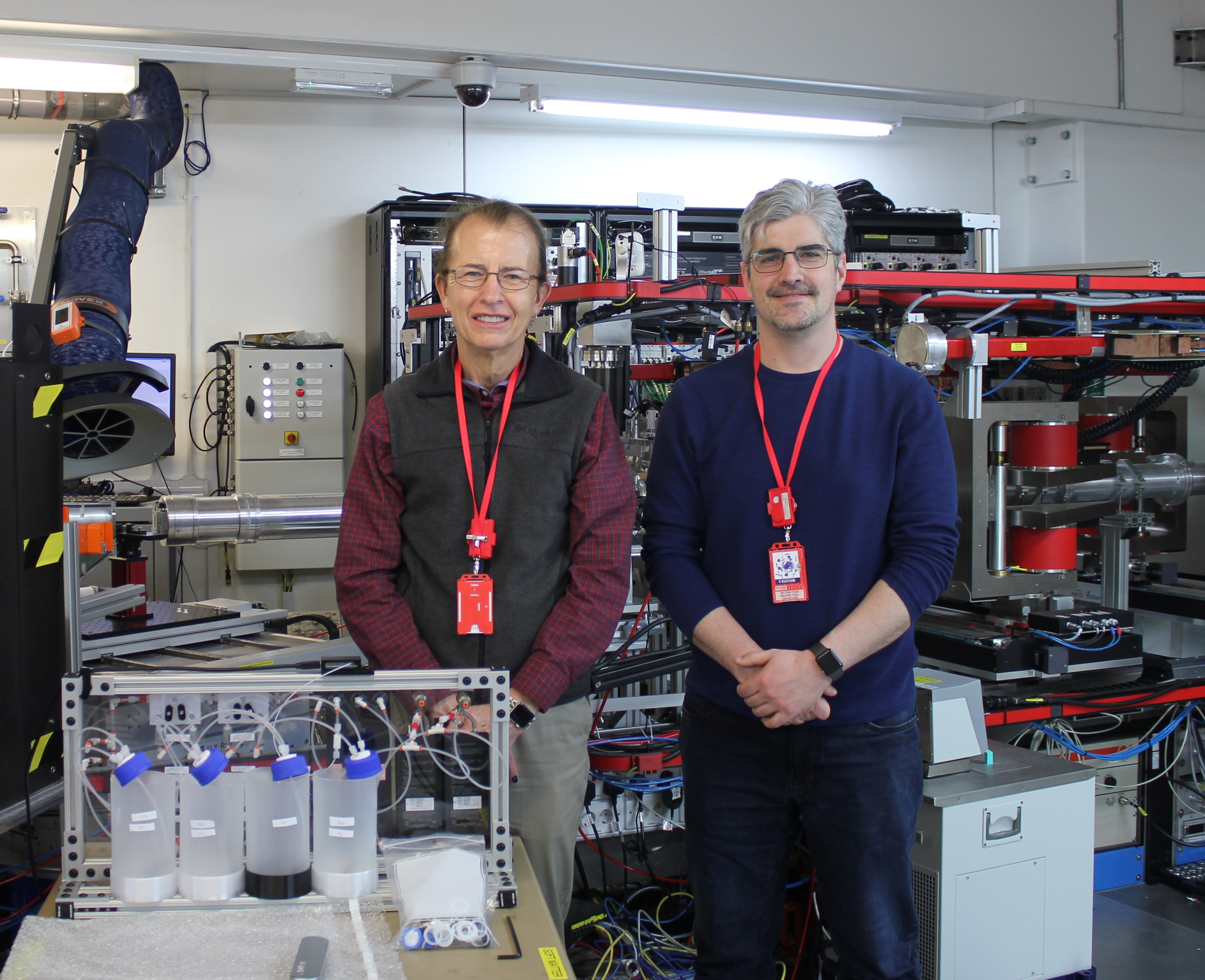
Carbon Capture
Just next door on Larmor we find researchers Hubert King and Ryan Murphy (seen in the photo) from NIST working on their Carbon Capture research. Using natural materials that the earth already uses to absorb CO2 from the atmosphere, this pair came to ISIS to analyse the involvement of water in this reaction. Ca(OH)2 and Mg(OH)2 are naturally occurring minerals in rocks, however to use their reaction process on the industrial scale we have to speed it up. This means we have to understand the process. As it happens, this process cannot occur without its magic catalyst … water, the mechanism of which is unknown. These researchers watched the reaction in real time in the beamline to analyse the structural changes that occur in the early stages of this reaction. Hopefully their experiment will reveal the mechanisms of water in this carbon capture reaction, in order to help us make the process more efficient.
We look forward to the publication of the results from all these studies and look forward to another jam-packed cycle coming up in May!
